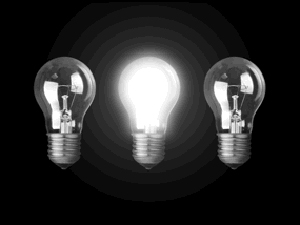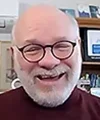 |
| Kevin Lamb |
While I’m perpetually enamored with the creative journey and ideas, I’ve always been fascinated by the neurological and cognitive processes that underpin our ability to develop novel solutions.
Sure, who doesn’t love celebrating a fantastic, game-changing idea? But there’s something about how the human brain divines insights and generates creative concepts that grabs me. Working in healthcare, I’m drawn to how the human body works and understanding structure, function and mechanics. I’m also on a never-ending quest to hack my brain for creativity, always looking for new information to apply to my creative journey and share with colleagues.
Of course, with good reason. Creativity is a major factor for employers and employees alike in considering their potential fit with one another, with creativity often a highly desirable trait. Potential employees and companies are trying to captivate their candidates with dynamic environments where creativity can truly flourish. In the agency world, creativity is considered among the most important attributes by clients in agency partners and is often cited as a critical factor in agency selection.
Creativity is at the core of why so many of us got into this business. We wanted to be in an environment where our ideas were recognized and rewarded, where we’d be encouraged to be curious and explore.
 |
Researchers have even discovered that when some people experience an exhilarating "a-ha" moment, their brain’s reward system is activated. If you've ever experienced pure joy as a result of creativity, you're far from alone.
Over the past decade, research on creativity has accelerated to the surprise of no one who traffics in ideas. We learn a little more about unlocking great creative thinking in our everyday work with each new finding.
With that in mind, a few recent studies offer some new perspectives on the brain and creativity that may give you something to take into tomorrow’s brainstorms.
The Value of (One Type of) the Wandering Mind.
Much research has been done on the connection between a wandering mind and creativity. One paper published in 2012, “Inspired by Distraction,” introduced the contemporary notion that performing an undemanding task enables our brains to unplug and wander, yielding a creative flow and output. Suddenly, the unplugged, unencumbered creative process became the “it” method. However, in a recent study in the journal Psychology of Aesthetics, Creativity, and Arts, researchers from the University of Minnesota and the University of Virginia explored this so-called “shower effect.” They sought to understand the balance between focused, linear thinking that may cap originality, and unfettered, random associations, which may be too far afield to be useful. The researchers found that wandering minds are most creative when engaged in a meaningful task as opposed to wandering minds that were engaged in a tedious task.
The key takeaway: When tackling a creative challenge, moderately engaging tasks that keep your brain active but not wholly focused on the creative output can help free your thinking to come up with ideas.
Sweet dreams.
The connection between sleep and creativity has been bandied about for centuries. Who among us hasn’t awakened flush with an idea or an insight only to fumble around in the dark for a notebook or our Notes app before the idea disappeared? Recently, French researchers studying people with narcolepsy have uncovered a point in the sleep cycle that may produce the most valuable creative ideas. Their study pinpointed a sleep stage called N1, approximately the first 10 minutes of sleep, where study subjects were most likely to solve a problem given to them before they dozed off. During N1, one is semi-lucid, which enables one’s mind to wander while still having the conscious ability to recognize an idea when it appears and retain the cognitive executive function to evaluate its usefulness.
Key takeaway: While we can’t all commit to nodding off in the afternoon, this research supports the general idea that the brain is most creative when relaxed. So, avoid jumping into a brainstorming or creative session fresh from an intense meeting or situation that requires deep concentration.
Affective diversity promotes creativity.
When you’re scheduling that brainstorm, there may be a natural predisposition toward selecting positive, optimistic, and bubbly participants. However, recent research out of Rice University’s Jones School of Business supports the novel concept of “team affective diversity” and its benefit on team creativity. Researchers found that teams that include people with positive affect (broad, flexible thinking) and people with negative affect (critical and persistent thinking) create “affective heterogeneity” that is crucial to collective problem-solving.
Key takeaway: Guard against homogenized brainstorms of the same people or types of people and get everyone involved in the creative process.
Encourage empathy to unlock creativity.
The creative journey often includes knowledge immersion, with data and research to define strategic aspects of the challenge. However, knowledge may only take you so far. Emotional intelligence, specifically empathy, may be an essential key to unlocking creativity. The University of Cambridge researchers conducted a year-long study of students at schools in London. The students were challenged to design an asthma treatment “pack” for children aged six and younger. One group used standard school curriculum paths and lessons, while the second used design thinking tools that engendered empathy. By the end of the study, students using the design tools experienced a nearly seven-fold increase in creativity based on a well-established psychometric test.
Key takeaway: Build empathy about your audience’s challenges in your creative journey and brainstorming sessions. It may open up a whole new perspective for the team.
While there’s no certainty or predictability for when our creativity will peak, or when the ideas will come, two things are certain. There is no singular path to ideas, and no person or type of person owns creativity. We all can solve problems with unique approaches and bring unique perspectives and experiences to any creative challenge. The goal with creativity is not about the end product but the journey, and the more we understand about how our brain produces creative ideas, the more we can apply those findings to our work each day.
***
Kevin Lamb is senior vice presiden at Coyne PR.


 Fiona Hutton, founder and CEO at Fiona Hutton & Associates, shares her insights as a female entrepreneur on how to overcome analysis by paralysis and how "Type A” executives can be effective leaders on the most recent Taking The Lead video podcast.
Fiona Hutton, founder and CEO at Fiona Hutton & Associates, shares her insights as a female entrepreneur on how to overcome analysis by paralysis and how "Type A” executives can be effective leaders on the most recent Taking The Lead video podcast. While employee inclusion is important for any workplace, three recent examples illustrate how staff empowerment can potentially threaten an organization.
While employee inclusion is important for any workplace, three recent examples illustrate how staff empowerment can potentially threaten an organization. David Barkoe, founder and CEO of Carve Communications, says it’s possible to effectively lead teams, even virtual ones, through any challenge.
David Barkoe, founder and CEO of Carve Communications, says it’s possible to effectively lead teams, even virtual ones, through any challenge. As faith in institutions crumbles and the spread of AI-generated fake news fuels people's mistrust about information, it's time for the PR business to focus on serving the public interest.
As faith in institutions crumbles and the spread of AI-generated fake news fuels people's mistrust about information, it's time for the PR business to focus on serving the public interest.


 Have a comment? Send it to
Have a comment? Send it to 
No comments have been submitted for this story yet.